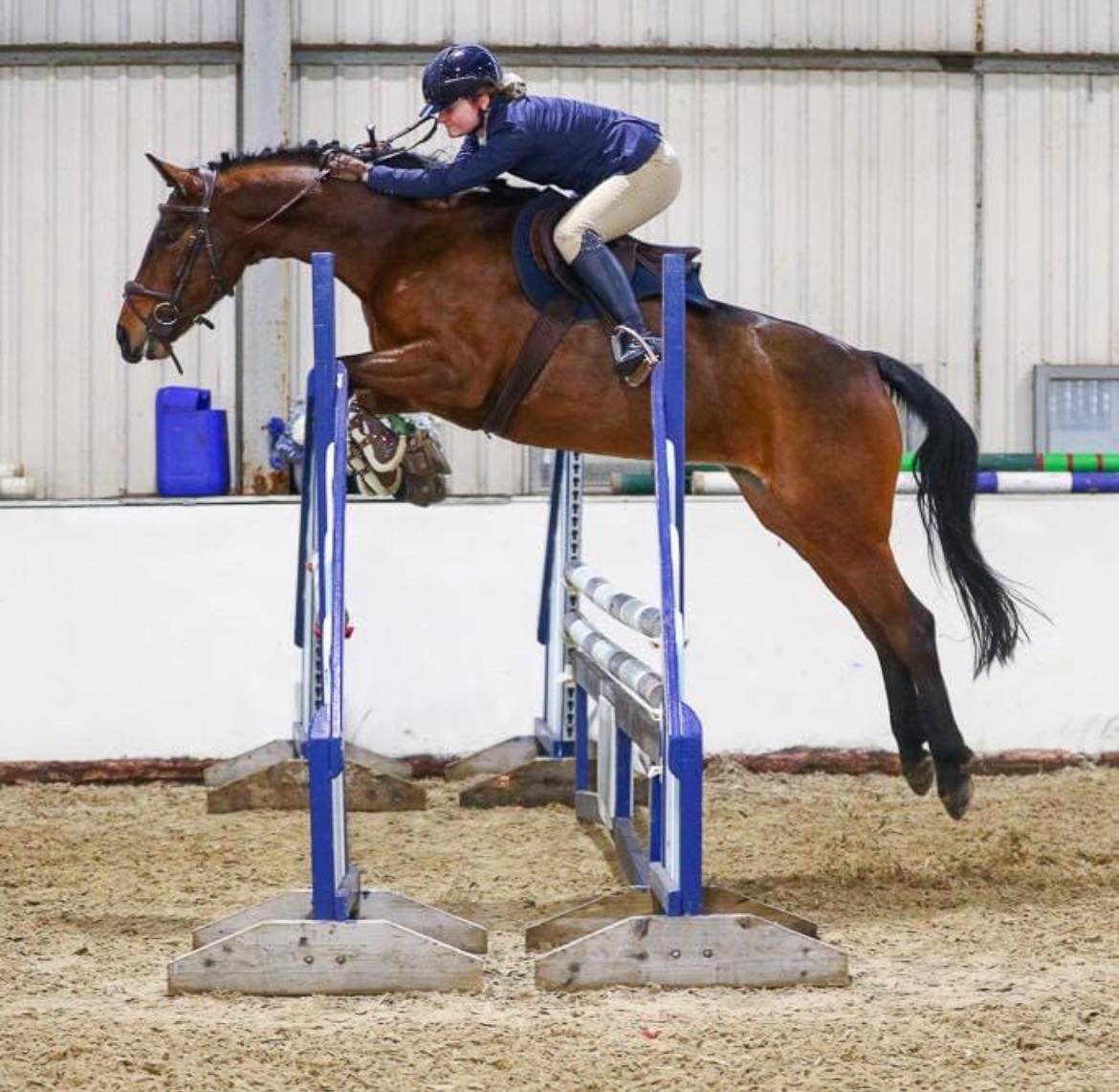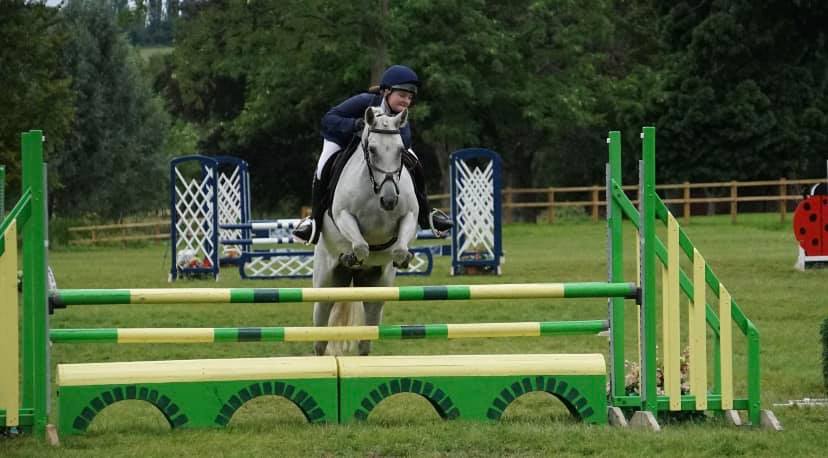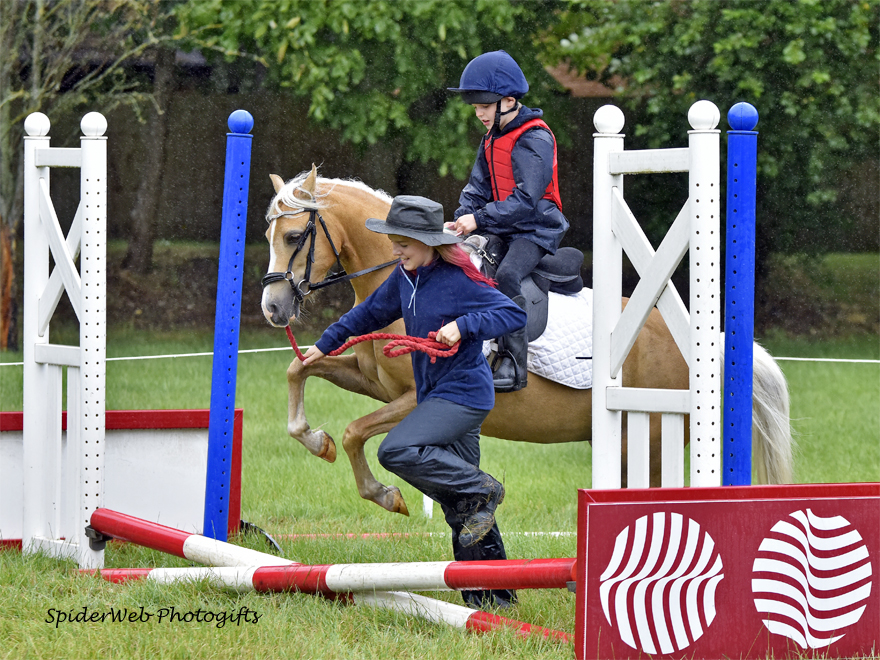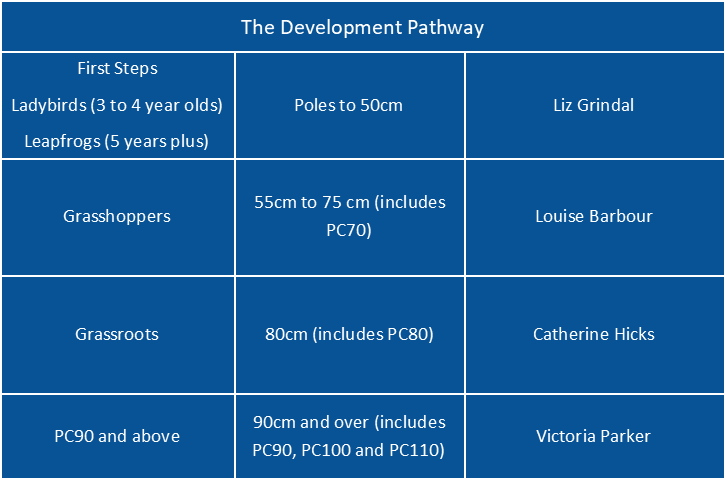
What is Show Jumping:
Show Jumping is where a horse and rider combination are tested over a course of colourful obstacles, known as fences, which can be easily knocked down if they are hit. The goal is to complete the course in the fastest time without getting any faults.
Faults are gained when a fence is knocked down, the horse stops at a fence (refuse) or the horse runs around a fence (run out).
Show Jumping can take place both indoors and outdoors, so is perfect to enjoy all year round.
Intended to demonstrate the horse and rider’s courage, athletic ability, precision, speed and partnership, your aim is to jump a clear round. If you manage to jump clear, you will go through to the second stage which is called a “jump-off”. A jump-off is a shortened course which is timed. The winner is the horse and rider with the least faults and the fastest time in the jump-off.
Inter branch and individual show jumping competitions are held at all levels but are not at Championship level until PC70. There are Area qualifying team and individual competitions, held usually in July, from 70cm through to 110cm. The PC70 and PC80 qualify for the Regional Championships at the end of August and PC90, PC100 and PC110 qualify for the national Pony Club Championships in mid-August. In addition, The Pony Club Spring Festival, with area qualifiers held in the winter months, offer classes for PC80, PC90, PC100 and PC110.

What to wear at competitions:
- Jodhpurs/Breeches – white, cream, beige, dark or muted colours may be worn. Dark-coloured contrast seats are permitted.
- Riding jacket – a traditional style worn with a Pony Club Tie or hunting stock.
- Pony Club badge with felt, if applicable, worn on left lapel.
- Current standard Hat – if a hat cover is worn, they should be dark blue, black or brown only.
- Standard riding or jodhpur boots with a well-defined square cut heel may be worn. Plain black or brown half chaps may be worn with jodhpur boots of the same colour.
- Hair should be tied back securely, in a safe manner to reduce the risk of hair being caught and to prevent scalp injuries.
- Navy NWPC numnah
- Whip, if carried should be padded.
- Stirrups should be the correct size for your foot.
- Pony/Horse should be plaited and clean with well-fitting tack, which should be in sound order with all the stitching checked and safe.
- At prize-giving, mounted or dismounted, competitors must be correctly dressed in their competition riding clothes.
Please refer to the current show jumping rule book if you are unsure whether your bit or tack is ‘legal’. The rule book also includes forbidden jumping boots, whip and spur lengths, eligibility and the rules of the competitions and heights of fences for the various classes.

Training:
The training pathway for a rider in show jumping parallels that of the horse/pony, starting with fundamental skills and gradually progressing to more advanced levels. NWPC offers a development pathway, starting with poles for our very youngest members, through to those competing at PC110 level.
Whilst our pathway aims to train members to compete through these levels, we also want our members to make use of the training to learn basic jumping skills, valuable for Pony Club tests, even if they have no desire to compete.

At First Steps we will work on foundational skills such as balanced seat and basic flatwork mastering basic riding skills such as steering, stopping and controlling the pony’s speed. They will be introduced to the jumping position to stay balanced over small fences and then progress to jumping small courses.
At Grasshoppers this work will be continued, developing better rhythm and balance and moving on to jumping full courses and learning jump off skills.
At Grassroots and above their skills as show jumpers are fine-tuned, developing their feel and timing with increased complexity of exercises.
Throughout the training pathway, riders should understand that progress takes time and dedication.
As a branch we work closely with coaches and use feedback to gauge whether a combination is ready to move up to the next level. When a rider has a new pony/horse, sometimes it is necessary to drop back a step to gain confidence and trust, this is actively encouraged in order to build a solid foundation. If you have any questions please contact the relevant pathway coordinator.
For additional information



